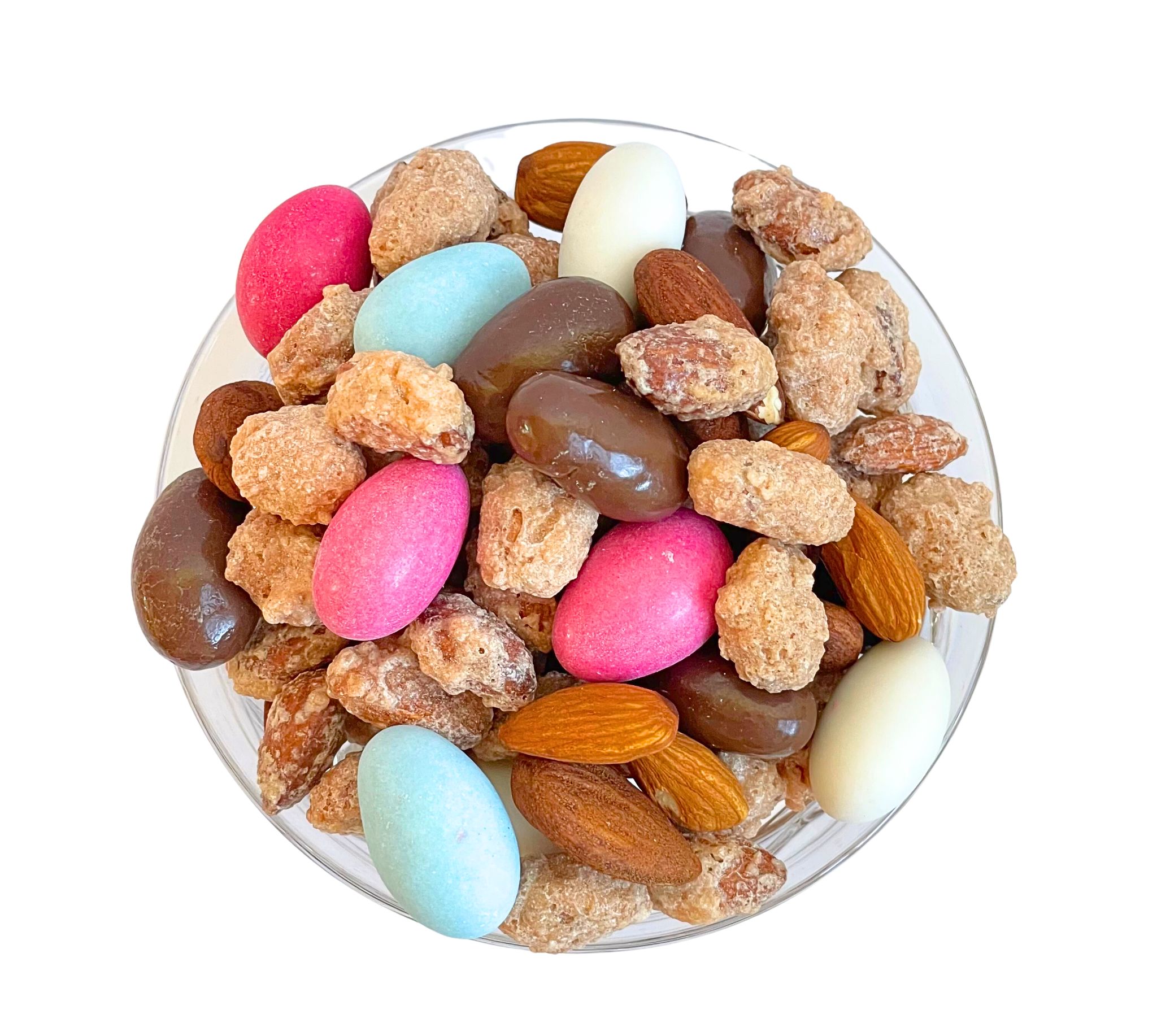Free Shipping on Orders over $49 (Retail Only)
Shop Now
- Address: 144 High Street Harpers Ferry, WV 25425
- Shop: 304.461.4714
- Orders: 304.535.8904

From Susan’s Books, Sweet as Sin (2016) and upcoming Fun Foods of America (Summer, 2024)
The value of sweets is more than flavor and fun. They played a huge part in the symbols that punctuated rituals and gave shape to important events. Almond-based candies are one of them. In the ancient Middle East and Mediterranean, the almond tree was the first tree to flower in spring. So, almonds became a symbol of good beginnings. And that is why, thousands of years later, we eat Jordan almonds at weddings and almond-rich Marzipan at Easter.

What IS an Almond?
Almonds are nuts, right? Not so fast… This popular food, with its pleasant taste and pop-in-your-mouth size, is so at home, you’d think the tree was native. But, as the peanut isn’t truly a nut, it’s a pea, the almond isn’t exactly a nut, either. It’s a drupe, which is a type of fruit. Its cousins are the peach, cherry, apricot, and plum among many others. Regardless, people have been enjoying the almond for thousands of years – samples eaten in 10,000 BCE were found in the Franchthi Cave of Greece.
So valued is the almond tree that it’s been a symbol of sweetness and fragility since pre-history. In the Bible, Aaron’s rod blossomed and produced almonds, while the Romans threw almonds at weddings as a fertility charm. The symbol reflects the almond’s flowering cycle: the tree is the first to flower, which announces sweet beginnings. The almond tree arrived in the U.S. with Spanish Franciscan Padres on the California coast in the mid-1700s. It wasn’t for a hundred years or so that the almond began to flourish.
What about Almond Candy?
Given its ageless popularity, the almond was embedded in ancient candies such as nougats, described by one tenth-century text as being as soft and sweet as lips. It was also central to the almond-based marzipan, used in “subtleties,” shaped as men, animals, trees, castles, and more as part of medieval feasts. Today they appear as fruits, flowers, and other shapes, with exuberant colors.
Two other almond-based candies are classics. One is the Jordan Almond, also known as the Italian “confetti” or the French “dragees.” These almonds were thrown in Roman weddings and are still served at American weddings today.

Another is chocolate bars with almonds. It’s not exactly ancient, but it is old, dating back to the turn-of-the-century when Hershey created one of the first non-all-chocolate candy bars by dropping in an almond. The almond was cheap, gave the bar heft, and sold well.

Others include a favorite at fairs and festivals cinnamon and sugar- coated almonds. These ingredients were around in the ancient Middle East and Mediterranean and later 18th century North America. Who knew? AND – don’t forget chocolate covered almonds – part of the Retro “Bridge Mix” set popular at card games from the 1920s through the 1960s.

Why Love Almonds?
No matter what you like or love when it comes to food…Almonds are so versatile, so CRUNCHY, and so delicious…how can you not? Thousands of years of human history proves the point


